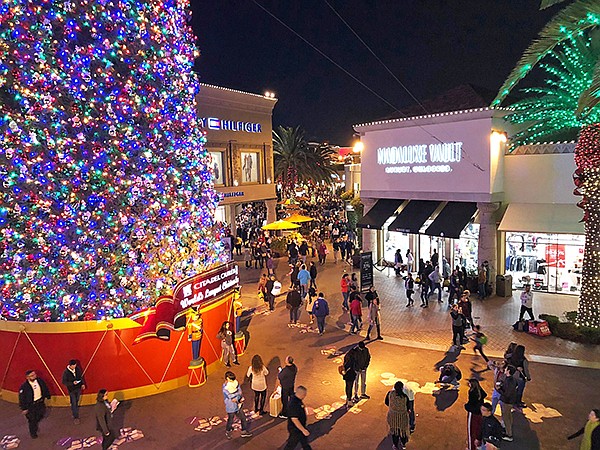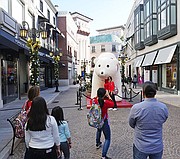BLACK FRIDAY REPORT
Black Friday Sees a Dip Over Last Year but Still Considered Strong
While more than 165 million Americans shopped online or in stores during the Black Friday weekend—which now extends from Thanksgiving Day through Cyber Monday—the numbers were down by nearly 10 million shoppers from 2017.
In 2017, some 174 million shoppers hit the malls or the Web to make purchases.
This year, the National Retail Federation said the average consumer spent $313.29 on gifts and holiday items during the five-day period. In 2017, they spent $335.47 during the same period.
However, U.S. retailers are still forecasted to be headed into a robust season, said Bill Thorne, the NRF’s senior vice president of communications and public affairs, who was speaking on a Nov. 27 conference call with reporters.
He noted that the 2018 holiday calendar features five weekends before Christmas instead of the traditional four, giving people more time to shop. An NRF survey noted that 12 percent of U.S. consumers have not even started shopping for gifts.
The NRF predicted that sales for the 2018 holiday season would reach the high end of the merchant group’s original forecast of a 4.3 percent to 4.8 percent increase over holiday sales in 2017, Thorne said. Holiday sales in 2017 totaled $687.87 billion, a 5.3 percent jump over the previous year.
“The top line is that this was a very strong holiday weekend and a very strong indicator of where holiday will be going,” Thorne said.
In a separate announcement, Amazon noted that Cyber Monday on Nov. 26 was the single biggest shopping day in the company’s history. The Seattle-headquartered retail giant, however, declined to announce its revenue totals for Cyber Monday or compare it to last year.
This holiday season will be supported by one of the best American economies in the past decade, said Ron Friedman, co-partner of consumer products and retail for the accounting and advisory firm Marcum LLP.
U.S. unemployment in October was at a low 3.7 percent, and consumer confidence is high. “Everything is moving in the right direction,” Friedman said. “Between now and Christmas will be a record-breaking period.”
Omnichannel shopping was a winner this year, getting a boost because retailers are giving consumers an experience they want, said Jeff Moore, senior managing director of retail practices for the Southern California and Hawaii region for the commercial and real-estate investment company CBRE.
“In general, the consumer and the retailers are getting together on expectations for omnichannel and how to deliver on those expectations. That wasn’t the case 24 months ago,” Moore said. Omnichannel strategies include “Buy Online/Ship to Store.” Retailers request consumers pick up online-purchased goods at physical stores. Picking up goods at stores cuts delivery costs and encourages consumers to shop for more goods at stores.
Omnichannel also allows retailers to tailor an experience to fit consumers’ needs. If they don’t have time to go to a store, they can complete all of their shopping online. If they’re looking for a bricks-and-mortar experience, they can go to a physical store, Moore said.
The Black Friday shopping experience is also shaped by discounts. About 65 percent of U.S. consumers purchased their gifts on sale during the Black Friday weekend, according to the NRF.
At the Outlets at San Clemente, retail traffic during the Black Friday weekend was estimated to be up more than 15 percent over last year, said Steve Craig of the Craig Realty Group, which owns and manages the San Clemente, Calif.–based outlet mall where items are generally 15 percent to 70 percent off retail prices.
Store promotions were about even with last year’s Black Friday weekend, said Jeff Van Sinderen, an analyst with B.Riley FBR. However, retailers’ margins will be bigger and stronger during the upcoming holiday season because retailers have controlled inventory, so they won’t be compelled to offer major discounts post-season and literally “give away the store.”
“Since 2016, retailers have been controlling more on how much they order,” Van Sinderen said. They are ordering fewer goods and buying closer to season, so they have a better chance to sell what is trending.
After the Black Friday weekend, retailers have to slog through a lull until the pace of shopping skyrockets 10 days before Christmas. During that lull, retailers can be tempted to offer deep discounts, Van Sinderen said. “If they get too promotional, they shoot themselves in the foot,” he said.
The Black Friday weekend is parsed into different shopping holidays such as Cyber Monday, the e-commerce-focused day following Black Friday. There’s also Small Business Saturday, which is sponsored by American Express. The shopping holiday has become popular with independent retailers and also has gained cachet with those who do not even use an American Express card.
























